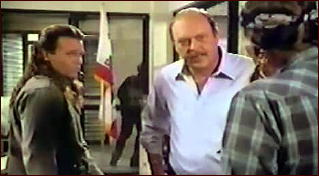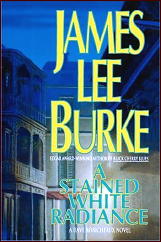WILLIAM HEFFERNAN – A Time Gone By. Simon & Schuster, hardcover, 2003. Akashic Books; trade paperback; April 2005.

As a journalist, investigative reporter and editor, along with many other honors, William Heffernan was nominated three times for the Pulitzer Prize. As a crime fiction writer, it’s not clear how many times he was nominated for the MWA’s Edgar, but he won it once, for Tarnished Blue (1995) as the Best Paperback Original.
He’s also not an author I’ve read before. Looking through the list of 16 books he’s written, it’s not difficult to see why. Most of his books are either gangster (Mafia) fiction or hard-edged police procedurals (his Paul Devlin series), neither of which category have I very actively been adding to my collection.
In recent years Heffernan has decided to expand his range, making use of his extensive journalistic background. Alternating with books in his Devlin series have come Cityside (1999) a look into the more unsavory aspects of big city tabloidism; and Beulah Hill (2001), which takies place in 1933 Vermont, with a murder of a white boy by a suspected black causing a severe setback to racial relations in the area.
A Time Gone By is Heffernan’s most recent book, and it’s very much of a tour de force. Switching the time frame of a murder mystery back and forth between 1945 and 1975, and making it seem the easiest thing in the world, never clashing gears once, is a challenge I suspect not many authors would be up to.

When a crooked judge is murdered in his home in 1945, Jake Dowling was only a rookie cop, and not even with a more experienced partner could they continue fighting forever when they quickly enough discover that the political fix is in. Thirty years later, Jake — who for the most part tells his own story — finally has the clout and — after the death of his wife — the will to see if the case can be closed at last.
There is a definite noir-ish feel to the scenes that take place in 1945, and of course, there is a woman involved. Even though Jake is married at the time, with a child on the way, he falls deeply in lust (if not love) with the judge’s new widow, a former hatcheck girl who has made good.
In 1975, Jake knows that the wrong man went to the electric chair. Even though the man had clearly committed other murders, Jake knows that he died for one he didn’t do, but who did? Thus develops a tantalizing interplay between past and present, an enigmatic puzzle that roots itself into the mind of the reader as well, and refuses to become dislodged.
While the transitions always take place smoothly, meshing into place almost perfectly, I believe the naive Jake of 1945, led around by the young widow by something other than his brain, is better developed than the Jake of 1975. As a chief of detectives for the NYPD, he still seems too callow for the job. How, one wonders, was he able to make all of the advancements he did to come out on top like this? It’s a subtle thing, and maybe it was only me.
As for the mystery itself, it’s a winner, with – as the veteran mystery reader will suspect all the way through – well, you couldn’t have a detective story written as well as this without having a twist or two along the way, and/or a substantial surprise or three before it’s done, could you?
I won’t say more. This is my kind of book. If you’re fond of 1940s noir with a slight but appreciable touch of sexual infidelity, you’ll have to read this one for yourself.
BIBLIOGRAPHY
* = Paul Devlin series. Devlin is a detective with the New York City police department. Some descriptions of the books make it seem as though he reports directly to the mayor.
Broderick. Crown Publishers, hc. 1980. No paperback edition.
Caging the Raven. Wyndham Publications, hc. 1981. No paperback edition.
The Corsican. Simon & Schuster, hc. 1983. Signet, paperback, 1987.
Acts of Contrition. New American Library, hardcover, 1986. Onyx, paperback, August 1987.
Ritual. New American Library, hc, 1989. Signet, paperback, 1993.

* Blood Rose. E. P. Dutton, hardcover, 1991. Signet, paperback, December 1993.
Corsican Honor. E. P. Dutton, hardcover, 1992. Signet, paperback, March 1993.
* Scarred. Signet, paperback, December 1993
* Tarnished Blue. Onyx, paperback, April 1995. Winner of 1996 Edgar award for Best Paperback Original Novel.
* Winter’s Gold. Onyx, pb, Jan 1997.
The Dinosaur Club. William Morrow, hardcover, 1997. Pocket Books, paperback, December 1998.
Cityside. William Morrow, hardcover, 1999. Akashic Books, softcoverm September 2003.
* Red Angel. William Morrow, hardcover, 2000. Avon, paperback, December 2001.
Beulah Hill. Simon & Schuster, hardcover, 2001. Akashic Books, softcover, April 2003.
* Unholy Order. William Morrow, hardcover, 2002. Avon, paperback, December 2002.
A Time Gone By. Simon & Schuster, hardcover, 2003. Akashic Books, softcover, Apr 2005.
The Dead Detective. Akashic, hardcover, 2010.


